This post is a part of The Crisis of Disconnection, a thought leadership series examining the latest research and insights to uncover how businesses can meet their growth goals, even amidst unprecedented changes to the way we work.
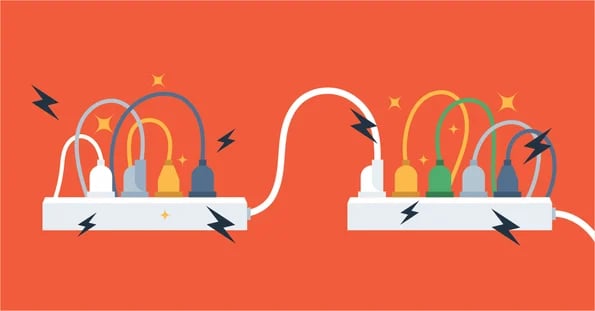
Despite our hyperconnected world, reaching customers and target audiences has never been harder. And, as we continue to see a shifting economy, evolving platforms, and constantly changing audience preferences, unless we take action the Crisis of Disconnection will only grow in 2023.
In this blog series, we’ve brought you up to speed on the Crisis of Disconnection, while outlining how the growth challenges ahead for your business won’t be your average walk in the park. Now, with the daunting stuff behind us, let's turn our attention toward the light at the end of the tunnel.
If you’ve been following along, we’re glad you’re back. If you’re just joining us now, we’re glad you’re here.
Prefer PDFs over blog posts? Download our new report, Identifying & Solving for The Crisis of Disconnection
How We Got Disconnected – And Why Fixing It is Vital
Before we go any further, let’s recap the disconnection challenges that have been giving business leaders pause:
- Point solutions are expensive, incomplete, and create more complexity than clarity. 74% of CRM buyers feel their teams have to switch between too many tools to get the job done
- People feel disconnected from each other — whether they’re at home or in the office. Only 49% of flex workers in the U.S. felt their team was working effectively in a hybrid environment.
- Strategies that once worked to connect with customers are no longer working. More than 30% of marketers say that they are experiencing average-to-no returns on their digital marketing investments.
It’s true that disconnection between your business and your customers — fueled by disconnection among employees and systems — is slowing growth.
If there’s a topline takeaway from our Crisis of Disconnection series, it’s this: connection can no longer be an afterthought.
Scaling companies need to place connection at the center of their business growth strategies. Otherwise, navigating the ever-evolving consumer landscape in the coming years will feel like an uphill battle.
Luckily, our research demonstrates that businesses are up for the challenge. The question is — how can you forge stronger connections across all facets of your company?
How to Re-align and Re-Connect Your Brand for Growth in 2023
1. Focus on Customer Connection, Not Customer Management
Suffice to say, we believe that the flywheel is pretty important when it comes to growing your business. The purpose of the flywheel is to accelerate growth, and spinning the flywheel (and achieving that growth) is only made possible through a strong connection to your customers. Not just to the ones you already have, but also to the ones to come.

In a world where 68% of companies are selling remotely, meeting your customers where they are has never been more important. But modern consumers feel like they’re being overloaded with an abundance of content, which only works to push them away from forging meaningful connections with businesses:
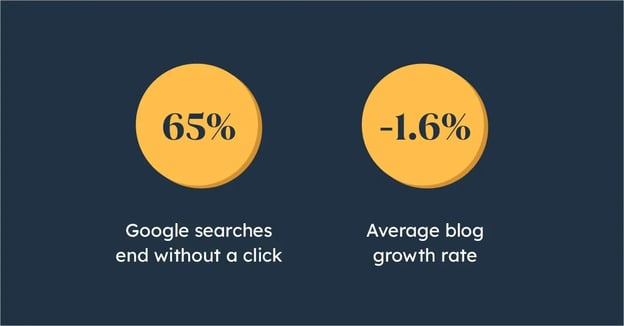
Overcoming digital fatigue and distrust is no small feat, but working to build a connected business growth strategy is well worth the time and effort. This starts by optimizing every stage of the buyer’s journey to foster greater connection and purposeful communication.
2. Let Data Take the Guesswork Out of Advertising
Work to advertise in the places where your target customers are spending their time. When data tells you that your audience is primed to make purchasing decisions on a given platform, put more eggs into that basket versus wasting advertising spend elsewhere. It also doesn’t hurt to partner with trusted influencers in the space who’ve already built a connection with your target customers that you can leverage.
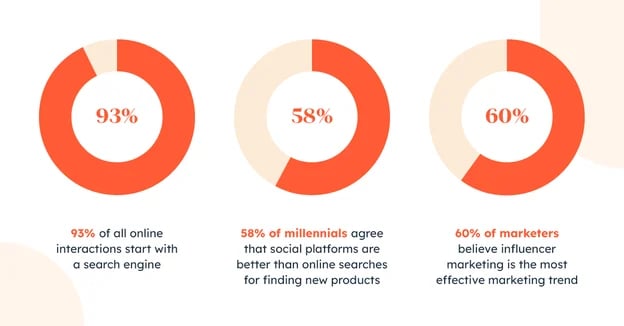
- 93% of all online interactions start with a search engine.
- 58% of millennials agree that social platforms are better than online searches for finding new products.
- 60% of marketers believe influencer marketing is the most effective marketing trend.
Clearly, even though the search engine experience may not be a perfect one as consumers are overwhelmed with content and often give up the search before clicking on anything, it remains an important place to be since most people who do end up interacting with a business online start on a search engine.
However, that may change in the future as the experience continues to suffer and both consumers and marketers are shifting their focus to social media as a channel for discovery and connection.
Of course, these are general trends, and advertising performance will vary depending on your specific audience. We always recommend doing your own research before committing to an advertising plan.
The key thing to remember here is that data should be driving these marketing decisions. Guessing isn’t good enough anymore — do your research to learn which channels and platforms your customers are spending the most time on. You can accomplish this by simply asking customers, followers, and prospects for their two cents. Don’t be shy! This is where first-party data can be your best friend. Lean on it to gain a better understanding of customers and their purchasing decisions.
While the question used to be, “How many channels are you active in?”, the more important question to be asking yourself today is, “How unified are those channels and are they providing a consistent, personalized customer experience?”. In order to give your organization the information it needs to develop deep connections with customers, you must connect:
- With the right customers using segmentation based on real-time, clear, and clean data.
- In the most convenient place using an omni-channel approach
- At the optimal time - whether that’s now, later, or somewhere in between
- With the right context using first-party data to add personalization to all of your interactions.
Once you’ve nailed down where your customers are, it’s time to figure out how to attract and delight them. 62% of consumers say a brand will lose their loyalty if they deliver an unpersonalized experience, so make sure you’re offering something that is relevant and valuable to each specific consumer. Remember — what works for one buyer persona may fall flat with another.
In the past, businesses looked backward to get a sense of what worked. We believe the future is about looking forward, finding ways to analyze real-time data to understand not only how well you’ve connected with customers up until now, but also how to optimize those customer connections in the future.
3. Make it Easy to Buy
Buyers expect their experiences discovering and buying B2B and B2C goods and services to feel the same, regardless of who they’re buying from. Naturally, you want to provide easy payment solutions and options for how your customers buy.
But just like it’s important to personalize content for each buyer persona, so too is it important to cater purchasing options to the particular needs of your audience. Whether that means working through a sales representative or buying through an online portal, understand what your consumers want so you can give them the experience they desire.

- Just over 50% of SMBs still rely on disparate solutions to manage payment data, averaging five tools per purchase transaction.
- 83% of buyers say convenience while shopping is more important compared to five years ago.
- Only 19% of consumers prefer to message a company’s chatbot when reaching out to a company online. 45% prefer a human representative.
Updating your old go-to-market strategies for the new world requires you to connect with your customers on a more meaningful level. Of course, building those connections hinges on the connectivity of your people.
4. Near, Far, Wherever You Are: Help your Teams Connect
As you can imagine, it’s much harder to connect with customers when you’re having a hard time connecting with the people across from you — whether that be in the office or over Zoom.
Disconnected teams create silos within your organization, and a disconnected business is one that’s not able to reach its full potential.
23% of businesses cite difficulties with communication and collaboration between teams as one of their top business challenges. 45% of workers say that the number of people they interact with at work decreased, and 57% of people say that they engage in fewer social activities these days. All that’s to say, connecting with one another isn’t as easy as it used to be. However, a fully remote or hybrid work model doesn’t necessarily have to equal disconnection between your teams.
Take HubSpot, for example.
Even before the global pandemic, we believed in building a company where people could do their best work. For some, that’s in an office building. For others, that’s from a home office. With the goal of making work-life harmony a reality, we committed to being a flexible, hybrid company that ties culture to our values, people, and mission, not locations.

In the words of our Director of Culture, Eimear Marrinan, “Culture does not need four walls to thrive.”
While the old ways of working may never return, it doesn’t mean it’s the end of company culture as we know it. The key is to ensure teams can buy into a common goal, and are able to work together as one to reach it.
Build a social connection that motivates your teams and enables them to foster better working relationships, even if it’s in a remote setting. 59% of people would like to keep working remotely as much as possible going forward, so building a culture that thrives in a hybrid work environment should be top-of-mind for businesses.
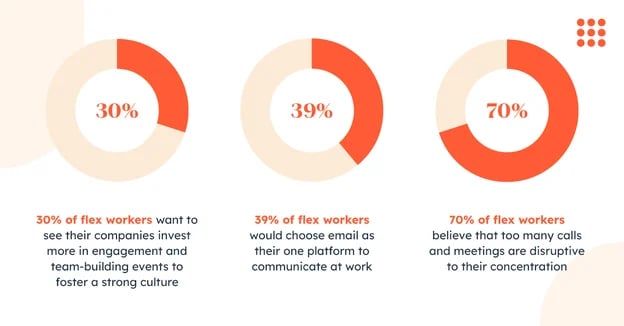
The times may be a-changin', but the craving for community is still consistent throughout every workforce. There’s no one-size-fits-all approach to being a hybrid company, and getting it right may take some time.
At HubSpot, we’re always learning how we can improve the way we work. Focusing on the critical ingredients — flexibility, empathy, communication, and inclusion — when building your work environment will inevitably put you on the path toward growth and success.
With all that said, we still haven’t gotten to another central, and sometimes overlooked, element of connection when it comes to your business — your systems, tools, and data. Pulling off all the above won’t be possible if you don’t have connected solutions in place to keep people and processes working in harmony.
5. Spend Less Time Configuring, and More Time Connecting
The average scaling company has 242 SaaS tools today. If that sounds like a lot, you’re right!
Expecting better relationships with customers and greater connection between teams when this many tools are in play is wishful thinking. In reality, less is more.
You need more than data. You need context.
You need more than content. You need connection.
You need more than contacts. You need community.
Hitting these goals largely depends on the connectedness of your internal systems, data, and tools. Your teams should be able to move away from focusing on building connections in a technical sense and towards fostering more meaningful connections on a human level.
Trying to make your myriad of disparate systems work together can feel like you’re swimming upstream. Instead, turn around and invest in a connected platform that streamlines and seamlessly connects your data.
Putting in the time and effort upfront to integrate a connected platform is well worth the long-term savings. One in four businesses today believe disconnected data and systems are among their chief concerns as they grow. And the ever-popular point solution approach brings with it its own set of problems.

Point solutions end up exacerbating silos across teams, which is ultimately not the point of implementing new tools and software. In reality, your teams work together closely, and giving them the means to connect and collaborate seamlessly largely hinges on the systems you put in front of them.
The time is now to prioritize “best-in-connection” solutions versus best-in-class tools. A platform that has connection at its core enables your teams to access data, collaborate with one another, and work through their responsibilities with no bumps along the way.
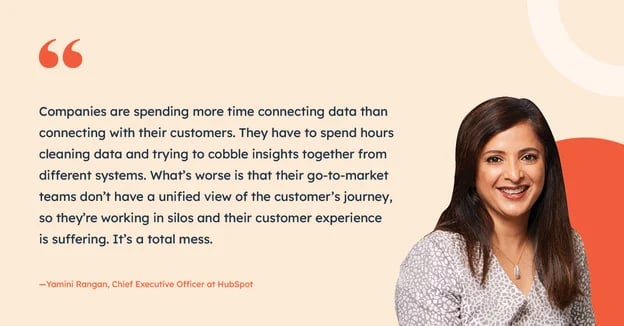
The trickle-down effect of disconnected systems negatively impacts your people, which ultimately impacts the customer experience. Making customer connection a central pillar of your business growth strategy starts by prioritizing a best-in-connection, all-on-one platform that delights employees and customers alike.
Time to Get Connected
That’s a wrap on our Crisis of Disconnection blog series! We want you to know that this is a concept we’re still deeply investigating, so while this is the end of this particular blog series, we’re just getting started talking about connection and how to optimize your business for it. Stay tuned for more on how HubSpot is actively working to address the Crisis of Disconnection!
In the meantime, check out and download our free report on this topic.
Then, start connecting your teams with an awesome tech stack, which could include HubSpot's Free CRM.











